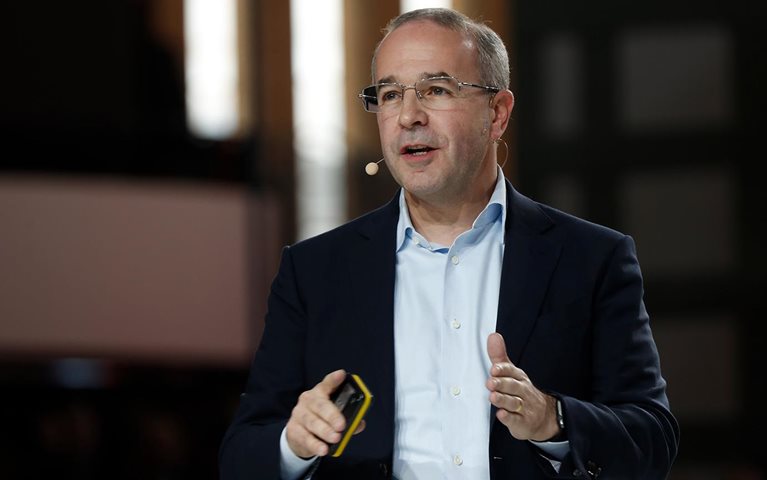Earlier this year, Pal Erik Sjatil became McKinsey’s regional managing partner for Europe and relocated from Moscow to Paris.
Born and educated in Norway, Pal Erik joined McKinsey in 1998. Before taking on the new role, he was managing partner for Eastern Europe, the Middle East, and Africa (2014–18) and earlier led our Oslo office (2007–10) and our offices in Eastern Europe (2010–14). He works with clients across the high-tech, telecom, financial-services, and energy sectors.
We sat down with Pal Erik in Paris to learn more about him and to hear his perspective on the outlook for European business.
Why Paris?
Paris is very much the center of Europe geographically. It is so convenient to live in Paris if you want to cover Europe. It’s a two-hour train ride to London, one hour to Brussels, two hours to Amsterdam, three hours to Frankfurt.
Of course, it is a nice city. You can walk everywhere. The food is good. It’s an easy life, if anything. I don’t speak French, so from that perspective maybe you could say it is a bit silly. But for this job, Paris is a great hub to be in.
What is the mood among European business leaders?
Meeting CEOs and then reading the media is like different worlds, quite frankly. You get more optimistic when you meet the CEOs. The world economy is growing quite nicely. Europe is well positioned for many of the opportunities. For example, growth in Asia and the increasing importance of Asia in the global economy is a huge opportunity [for] Europe. Europe is close to Asia—even connected. And European companies have done a good job creating products for these fast-growing economies: everything from luxury goods to industrial products to cars.
All CEOs want to talk about geopolitics. All CEOs find the [geopolitical] landscape complex. They do worry. On the other hand, it has not hit their businesses as much as you might think. Again, if you read the media you might think the situation is very difficult, but if you discuss it [with CEOs] you find that they are concerned mainly about the outlook. The fundamentals today are pretty good.
Can Europe win in high tech?
I think what happened in Europe in high tech was the result of complacency first and foremost—complacency at the companies and complacency at a European level, including the EU. When complacency sneaks in, the pace of innovation slows. We must not be complacent. We need to be bold, particularly when we see big technology shifts.
If you look at many innovations [in technology], they are still happening in Europe. Take the Nordic countries as an example. We have always been extremely early in things like mobile technology and internet banking. Actually, I have never been in a bank branch in the Nordics—never, and I’m 46! We didn’t do this even when I was young.
Our challenge in Europe is how to scale best practice. When we have something innovative, how do we make sure we are quicker at sharing best practice across Europe?
What are the big challenges facing Europe?
When you think [about] automation and advanced AI [artificial intelligence] technologies, and how fast they are being deployed, we need to have an answer on what to do with the workforce. CEOs are comfortable with deploying AI—they know how to do it, they are prepared to do it. Their biggest issue is what we do with the people. Yes, deploy the technology, but at the same time take a very bold approach to reskilling.
As a CEO you have a huge responsibility to the capital markets. You need to deliver your earnings, profits, and dividends et cetera. But there is also a social responsibility. In this case, they can go hand in hand because if you do good reskilling [of your workforce] you can grow. One thing European CEOs need [to] focus on is growth. Just cutting costs will not take you where you want to go.
Tell us about your family?
I am married, to Maja, and we have three kids. My wife has worked for most of the time we have been together. When we had small kids, we lived through all the dual-career challenges that I hear younger colleagues talking about. Often, I took the kids to kindergarten in the morning. Maja would pick them up in the evening. Working through this puzzle every day wasn’t easy. Of course, now the kids are older; they don’t want to spend time with me anymore!
Why did you join McKinsey?
I was a student at a school called NTNU [Norwegian University of Science and Technology], a technical university in Norway. I am a master of science. McKinsey was not a natural choice for me. The honest truth is that I went through the interview process to learn how to be interviewed.
To my surprise, I was asked to go to a second round and was interviewed by Wilhelm Mohn and Hugo Maurstad, senior partners at that time in the Oslo office. On the one hand, they were difficult interviews. On the other, they were very convincing about McKinsey as a place. Afterward, I was very keen to join. The next morning, I got a call with an offer, and I just said yes.
